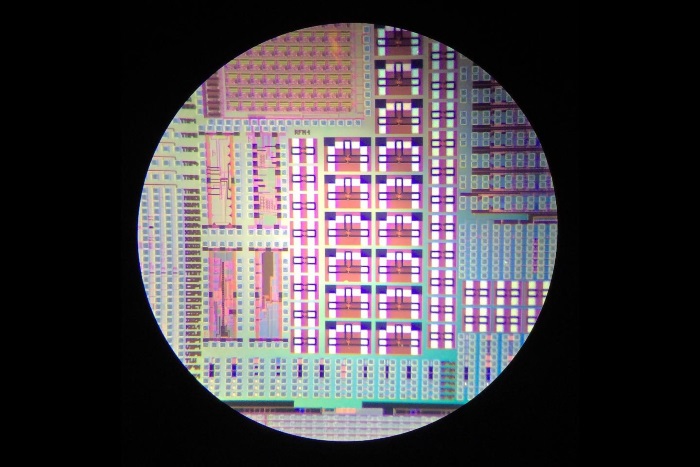In the very same Cambridge laboratory where British physicist J.J. Thomson discovered the electron in 1897, a team of European scientists has developed a new electronic device that is so incredibly accurate, it can detect the charge of a single electron in less than one microsecond. Silicon chip was used for the design of the gate sensor.
Silicon chip was used for the design of the gate sensor.
Referred to as the “gate sensor”, this new technology could eventually be used in quantum computer to read information stored in the charge of a single computer.
“The device is much more compact and accurate than previous versions and can detect the electrical charge of a single electron in less than one microsecond,” M. Fernando González Zalba, leader of this research from the Hitachi Cambridge Laboratory and the Cavendish Laboratory, told SINC.
The “gate sensor” is referred to as such because in addition to detecting the movement of individual electrons, the device can also control its flow, as if it were an electronic gate that opens and closes.
In terms of demonstrations, Zalba and his team were able to show they could detect the charge of an electron with their technology in roughly one nanosecond; that’s the best value ever obtained for this type of system.
Generally speaking, today’s standard electrical equipment is made up of trillions of electrons whose collective movement makes these appliances work. This is all going to change in the coming years as ultra-precise biosensors, single electron transistors, molecular circuits, and quantum computers begin to make their way to market. As this happens, that is, as a new technological sector which bases its electronic functionality on a single electron’s charge begins to take a larger hold of the market, technologies like the “gate sensor” described above will become increasingly important, as it offers a more efficient solution to the technology’s operations.
The group’s work was published under the title, “Probing the limits of gate-based charge sensing” in the journal Nature Communications.
Here’s the abstract to the article:
Quantum computation requires a qubit-specific measurement capability to readout the final state of individual qubits. Promising solid-state architectures use external readout electrometers but these can be replaced by a more compact readout element, an in situ gate sensor. Gate-sensing couples the qubit to a resonant circuit via a gate and probes the qubit’s radiofrequency polarizability. Here we investigate the ultimate performance of such a resonant readout scheme and the noise sources that limit its operation. We find a charge sensitivity of 37 μe Hz−1/2, the best value reported for this technique, using the example of a gate sensor strongly coupled to a double quantum dot at the corner states of a silicon nanowire transistor. We discuss the experimental factors limiting gate detection and highlight ways to optimize its sensitivity. In total, resonant gate-based readout has advantages over external electrometers both in terms of reduction of circuit elements as well as absolute charge sensitivity.
Via: EurekaAlert.org
Advertisement
Learn more about Electronic Products Magazine





